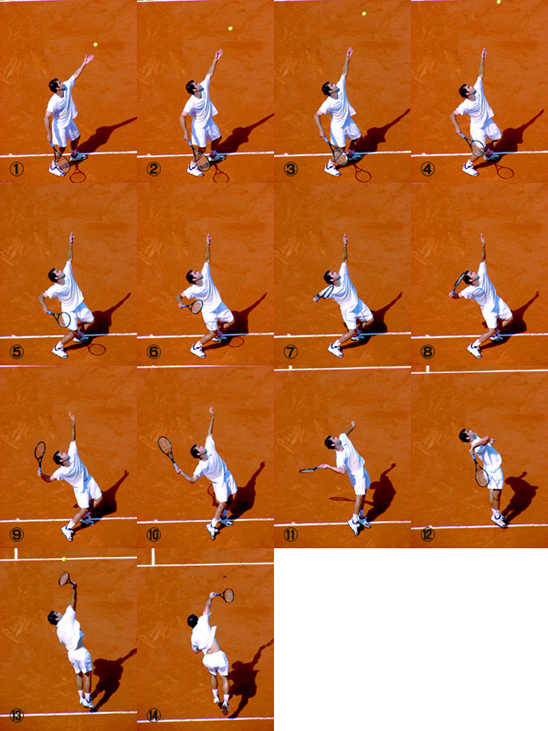But I believe that throwing a ball in the way taught by Pat Dougherty does copy motions in the tennis serve including ISR.
To do single frame on Youtube use the "
." & "
," keys.
Throw frame at ball release with double exposure of forearm motion. Note the upper arm between the shoulder joint and elbow, for this upward throw, even has a similar angle to the serve picture below.
Tennis serve at impact with double exposure of forearm & racket motion. I believe that the arm is straighter at the later time as in high level serves.
There is an incidental double exposure of the arm that shows ISR moving the forearm & ball for the throw and moving the forearm and racket for the serve. The use of ISR - the most difficult sub-motion of the tennis serve - is very similar for both motions. Looks like a good simulation for the server especially as Dougherty teaches throwing the ball upward. Of course, to get speed from ISR the hand for the throw and the racket head for the serve must be located at a distance from the rotation axes of ISR and those angles show in both of the above pictures. Imagine the rotation axes of the upper arm bone.
This same student after two years of development at 5 hours a week.
But I disagree with the demo of the top spin serve given at 3:45, "
When we are talking about top spin and kicks we gotta make sure that the racket head is making contact with the level of the grip not way up here". The racket shaft tilts up from the grip to contact for a kick serve in the ATP serve high speed videos that I have seen. ??





